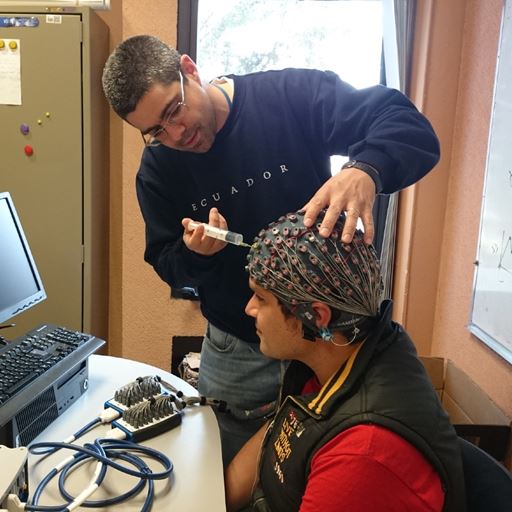AI project to help stroke patients in rural Mexico
-
Date
Thu 10 Sep 20

Artificial intelligence experts from the University of Essex are part of an innovative project to make high-tech rehabilitation therapies available for stroke patients in rural Mexican communities.
The project is being funded by the UK Government’s Global Challenges Research Fund at Essex, which supports cutting-edge research that addresses the challenges faced by developing countries.
Dr Javier Andreu-Perez, from Essex’s Centre for Computational Intelligence, Smart Health Technologies Group, is working on the project with colleagues from the National Institute of Astrophysics, Optics and Electronics (INAOE) and the University Hospital of the Meritorious Autonomous University of Puebla (BUAP) in Mexico.
Strokes are the third highest cause of death in Mexico and among the top causes of disability both in Mexico and the world. Whilst exact figures are not known, it is estimated there are about 200,000 new cases in Mexico per year.
After an injury, the brain readjusts its connections and activity so that, despite being damaged, it can keep doing mostly the same functions.
Neurorehabilitation therapies are designed to help patients regain as much or their former independence as possible after suffering a stroke. However, these therapies are costly and are usually only available in specialist hospital units, meaning they are largely inaccessible to rural communities in developing countries such as Mexico.
In recent years there is growing interest from research groups around the world to translate lab-based research into technologies that can be used in remote environments and rural communities as scientists understand the importance to make the AI revolution work for everyone; supporting health, education, nutrition, societal and economic growth.
This new project will combine “on-node” AI with low-cost electronic instrumentation to create a prototype that can collect neuroimaging data and be deployed to rural communities.
Dr Felipe Orihuela-Espina, who is the leading investigator at INAOE in Mexico, explained: “These low-cost devices will combine EEG (electroencephalogram) and fNIRS (functional near infrared spectroscopy). Together, these two neuroimaging methods can shed light on the biological response of the brain to deal with the damage produced by the stroke.”
Dr Andreu-Perez, who is also part of Essex’s Intelligent Embedded Systems and Environments group added: “The advantage of our novel AI is that it can automatically find the occurring reorganisation patterns in the brain on-the-fly that would otherwise take many hours to investigate.
”The data will be processed, analysed autonomously in the embedded intelligent system, and a report of the rehab session will be automatically transferred back to the hospital for the doctors to analyse remotely and make clinical decisions to optimise therapy.”
.jpg?mh=500&mw=500&hash=6568B6C9CCF5290A596BEF6678B6AD0E)



